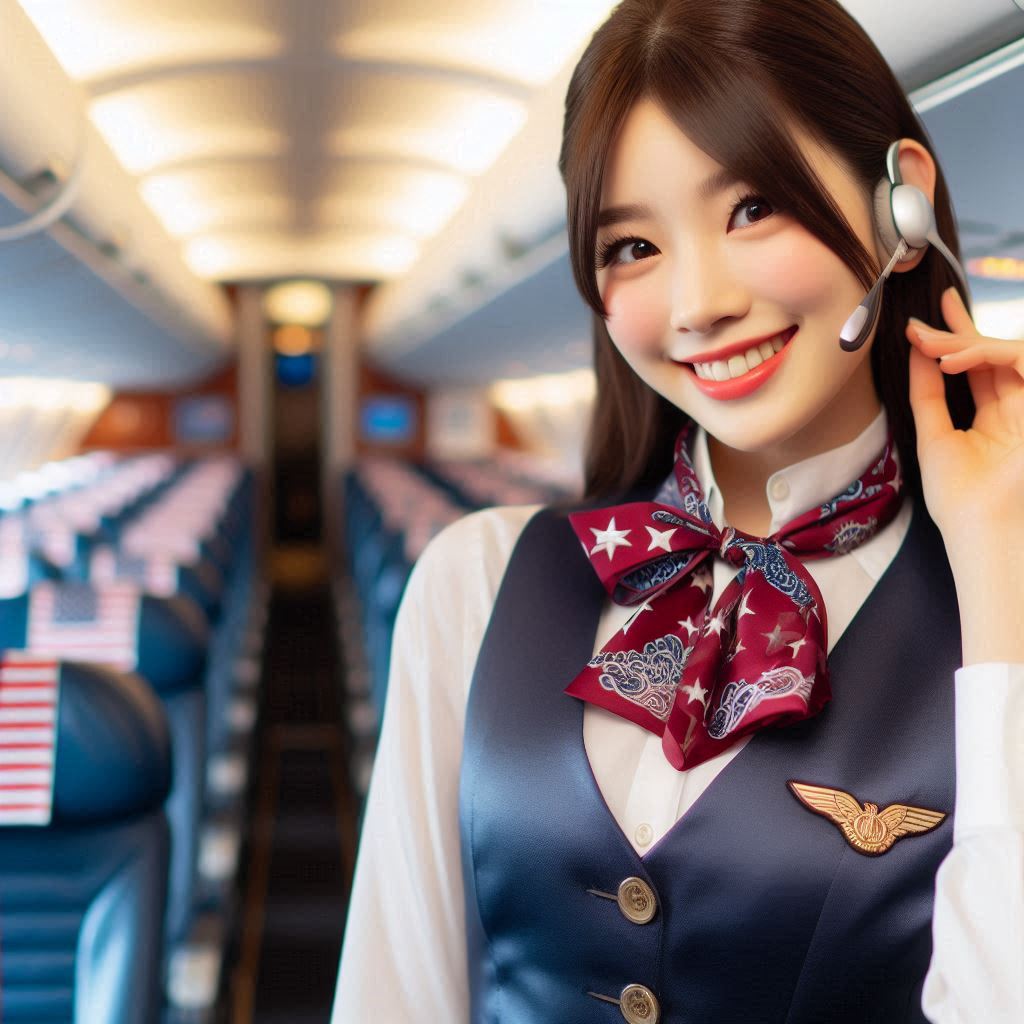Introduction
Navigating flight attendant layovers and destinations is crucial for a successful career in aviation.
Flight attendants frequently experience layovers in various locations, making knowledge of these destinations essential.
Understanding layover rules, safety protocols, and local cultures enhances their overall experience.
Flight attendants often face unique challenges during layovers.
They must balance their work responsibilities with personal well-being while managing time effectively.
Properly navigating layovers can lead to enriching experiences and enjoyable adventures.
This blog post will cover several key topics related to flight attendant layovers.
First, we will explore the importance of understanding layover rules and regulations.
Next, we will discuss the significance of researching layover destinations for better experiences.
We will provide tips on planning activities during layovers and staying organized to manage time effectively.
Additionally, we will highlight safety and security tips to ensure well-being in unfamiliar locations.
Finally, we will discuss the importance of communication with crew members for successful teamwork during layovers.
By focusing on these aspects, flight attendants can maximize their layover experiences and thrive in their roles.
Know the layover rules and regulations
Understanding layover rules and regulations is crucial for flight attendants.
Airlines set specific guidelines to ensure safety and compliance.
Each airline has its own set of rules that flight attendants must follow.
These rules govern layover duration, crew rest requirements, and accommodation standards.
Rules and Regulations Regarding Layovers Set by the Airline
For example, some airlines require a minimum rest period after a long flight.
This ensures that flight attendants remain alert during their duties.
Other regulations may specify the types of accommodations provided during layovers.
Adhering to these guidelines enhances crew safety and the overall passenger experience.
Importance of Following These Rules for Safety and Compliance
Following layover regulations helps maintain operational integrity.
Non-compliance can lead to safety risks, legal issues, and disciplinary actions.
Flight attendants should prioritize compliance to foster a safe working environment.
This commitment not only protects crew members but also benefits passengers.
Tips on How Flight Attendants Can Stay Informed About Layover Regulations
Staying informed about layover regulations is essential.
Flight attendants should regularly review their airline’s policy manual.
This manual provides comprehensive details about layover procedures and requirements.
Additionally, attending training sessions can reinforce knowledge of current regulations.
Connecting with colleagues can also be beneficial.
Experienced flight attendants often share valuable insights about layover rules.
Joining crew forums or social media groups fosters communication and collaboration.
These platforms allow attendants to exchange tips and stay updated on changes.
Airlines frequently update their policies.
Flight attendants must remain proactive in seeking information.
Subscribe to airline newsletters or check official websites for updates.
This approach helps ensure compliance with the latest rules and regulations.
Another useful strategy involves maintaining an organized record of layover guidelines.
Flight attendants can create a personal binder or digital file.
This resource should include key regulations and any updates received.
Having easy access to this information streamlines the layover process.
Understanding time zones is also critical during layovers.
Flight attendants must adjust their schedules accordingly.
Failure to adapt can lead to fatigue and non-compliance with rest requirements.
Finally, flight attendants should prioritize self-care during layovers.
Proper rest and nutrition support compliance with regulations.
Ensuring physical and mental well-being is crucial for effective performance.
Knowing layover rules and regulations is vital for flight attendants.
Adhering to these guidelines ensures safety and operational integrity.
By staying informed and connected with peers, flight attendants can navigate layovers confidently.
A proactive approach to understanding regulations ultimately enhances the flying experience for everyone involved.
Read: Tips for Nail Technicians Working in High-End Salons
Research the layover destination
Flight attendants should research their layover destinations before arrival.
Understanding a new place enhances the overall travel experience.
Being informed helps attendants navigate unfamiliar surroundings with confidence.
It also allows them to make the most of their time off.
Flight Attendants to Research the Layover Destination Before Arrival
Prior research can help flight attendants identify nearby attractions and amenities.
Knowing the location of restaurants, shops, and entertainment options is essential.
It allows them to plan their schedules effectively.
Researching transportation options can also save time and stress upon arrival.
Attendants can discover public transit routes or taxi services in advance.
This knowledge helps avoid confusion and delays.
Where to Find Information About the Destination
There are many resources available for flight attendants to gather information.
Official tourism websites often provide detailed insights about local attractions.
They typically include maps, travel guides, and event calendars.
Additionally, travel blogs and forums can offer personal experiences and tips.
These platforms often contain valuable recommendations from fellow travelers.
Social media can also be an excellent resource for real-time updates.
Flight attendants can follow local pages or hashtags for insights.
Platforms like Instagram and Facebook showcase local events and hidden gems.
Online travel communities allow attendants to ask questions and share experiences.
Mobile apps can simplify the research process.
Many travel apps provide destination guides, restaurant reviews, and transportation options.
Using apps like TripAdvisor or Yelp helps find highly rated spots nearby.
Flight attendants can easily save their favorite locations for quick reference.
Benefits of Understanding the Local Culture, Customs, and Language
Understanding local culture enhances interactions with residents.
It fosters mutual respect and enriches the travel experience.
Knowing basic customs can prevent unintentional faux pas.
For example, greeting locals appropriately shows awareness and appreciation of their culture.
Learning key phrases in the local language can also be beneficial.
Simple greetings or polite expressions can go a long way.
They help create a positive rapport with locals and can facilitate smoother interactions.
It demonstrates respect for their language and culture.
Moreover, understanding local customs can enhance safety.
Being aware of local laws and social norms reduces the risk of misunderstandings.
Flight attendants can make informed decisions about their activities and behavior.
Thorough research about layover destinations is essential for flight attendants.
It allows for better planning and maximizes free time.
Utilizing various resources helps gather valuable information about each destination.
Understanding local culture, customs, and language fosters positive experiences.
This proactive approach not only enhances personal enjoyment but also supports successful interactions with locals.
Read: Understanding Pet Grooming Safety Standards
Plan activities during layovers
Flight attendants can maximize their time during layovers with careful planning.
Making the most of these brief stops enhances their overall travel experience.
A well-thought-out schedule allows for both rest and exploration.
Balancing these activities is key to staying refreshed and energized.
Ways for Flight Attendants to Make the Most of Their Time During Layovers
One effective way to utilize layover time is to create a checklist of activities.
This checklist should include must-see attractions, dining options, and leisure pursuits.
By prioritizing these activities, attendants can ensure they enjoy their time off.
It’s also essential to allocate specific time slots for each activity.
This approach helps avoid the stress of rushing from place to place.
Flight attendants should also check local transportation options.
Understanding how to navigate the area can save time.
Utilizing public transport, ride-sharing services, or rental bikes can be efficient.
Planning the route in advance reduces confusion and enhances the overall experience.
Activities to Do During Layovers
During layovers, flight attendants can engage in various activities.
Exploring local cuisine is a popular choice.
Dining at nearby restaurants allows attendants to taste authentic dishes.
They can also seek out street food for a quick culinary adventure.
Visiting cultural landmarks or museums can provide enriching experiences.
These activities help flight attendants understand the destination’s history and significance.
Many cities offer walking tours that showcase local attractions.
Joining a guided tour can be an excellent way to learn and explore simultaneously.
If time allows, flight attendants can also relax at local parks or beaches.
These spots provide a peaceful environment to unwind after flights.
Reading a book or enjoying a coffee in a serene setting can recharge their energy.
Importance of Balancing Rest and Exploration During Layovers
While exploring is exciting, rest is equally crucial.
Flight attendants should prioritize sleep to maintain their health.
Adequate rest boosts alertness and overall well-being during flights.
Creating a balance between activity and relaxation enhances their performance.
Setting aside time for self-care is essential during layovers.
Simple practices like stretching or meditating can refresh the mind and body.
Flight attendants should listen to their bodies and know when to rest.
Recognizing personal limits ensures they remain energized for their duties.
Planning activities during layovers allows flight attendants to maximize their time.
Creating a checklist of must-do activities and understanding local transportation can enhance exploration.
Engaging in culinary experiences, cultural visits, and relaxation helps create a well-rounded layover.
Balancing rest with exploration is vital for maintaining energy and performance.
By following these strategies, flight attendants can make the most of every layover experience.
Read: Understanding Nail Disorders: A Technician’s Guide
Stay organized during layovers
Staying organized during layovers is essential for flight attendants.
An organized approach simplifies transitions and reduces stress.
Effective organization allows attendants to focus on their tasks and enjoy their downtime.
Implementing practical strategies can significantly enhance their layover experience.
Tips on How Flight Attendants Can Stay Organized During Layovers
One effective tip is to create a packing checklist.
This checklist should include essential items such as uniforms, toiletries, and personal items.
Having a comprehensive list helps prevent forgetting important belongings.
Attendants can also use packing cubes to separate different categories of items.
This method keeps their luggage tidy and makes retrieval easy.
Another helpful strategy involves organizing carry-on bags effectively.
Flight attendants should allocate specific sections for each category of items.
Designating a pocket for travel documents and a compartment for electronics streamlines access.
This organization minimizes time spent searching for items during layovers.
Flight attendants should also use technology to their advantage.
Mobile apps can help manage schedules and tasks efficiently.
Calendar apps can remind attendants of important layover activities or flight information.
Utilizing note-taking apps can keep track of personal tasks and goals.
Importance of Packing Efficiently and Keeping Track of Belongings
Packing efficiently saves time and reduces stress during layovers.
Flight attendants should consider the duration of each layover when packing.
For short layovers, they can bring only essential items.
However, for longer layovers, they should include items for rest and recreation.
Keeping track of belongings is equally important.
Flight attendants can develop a routine for checking their bags before leaving.
This practice helps ensure they don’t forget personal items at hotels or airports.
Implementing a “last check” system before departing can minimize lost items.
Additionally, flight attendants should utilize technology for tracking belongings.
Using apps to monitor luggage or employing Bluetooth trackers can provide peace of mind.
These tools help locate lost items quickly and easily.
How to Create a Routine for Layovers
Creating a consistent routine can enhance organization during layovers.
Flight attendants should establish specific times for rest, meals, and activities.
Setting aside time for personal care helps maintain well-being.
Having a routine makes it easier to transition from work to leisure.
Flight attendants can also create a daily checklist for layovers.
This checklist should include essential tasks and personal goals.
Completing these tasks fosters a sense of accomplishment and keeps them focused.
Staying organized during layovers is vital for flight attendants.
Utilizing packing checklists and organizing carry-on bags enhances efficiency.
Packing efficiently and keeping track of belongings reduces stress and frustration.
Developing a routine fosters better time management and personal well-being.
By implementing these strategies, flight attendants can ensure a smoother and more enjoyable layover experience.
Transform Your Career Today
Unlock a personalized career strategy that drives real results. Get tailored advice and a roadmap designed just for you.
Start NowRead: How to Deal with Pet Grooming Allergies

Safety and security tips
Prioritizing safety and security during layovers is essential for flight attendants.
Navigating unfamiliar destinations can present various risks.
Maintaining a focus on safety ensures personal well-being and enhances overall travel experiences.
Implementing practical strategies can significantly improve security while on layover.
Importance of Prioritizing Safety and Security During Layovers
Flight attendants must understand that their safety directly impacts their ability to perform duties.
Ensuring personal security protects not only themselves but also their colleagues and passengers.
Being cautious in unfamiliar environments reduces the risk of theft, injury, or other dangers.
Flight attendants should always take the necessary precautions to safeguard their well-being.
How Flight Attendants Can Stay Safe in Unfamiliar Destinations
To enhance safety, flight attendants should research layover destinations beforehand.
Understanding the local area, including its safety ratings, is crucial.
Flight attendants can also identify safe neighborhoods and local resources.
Familiarizing themselves with local emergency services and contact numbers is essential.
Traveling in groups can also enhance safety.
Whenever possible, flight attendants should team up with colleagues during layovers.
Group travel minimizes risks and provides additional security.
If traveling alone, they should stay connected with someone throughout the layover.
Utilizing reputable transportation services is vital.
Flight attendants should avoid unlicensed taxis or unknown rideshare drivers.
Booking rides through established companies ensures reliable transportation.
Researching local transit options can also provide safe alternatives.
Importance of Being Aware of Surroundings and Following Safety Protocols
Being aware of surroundings is crucial for personal safety.
Flight attendants should remain vigilant while exploring new areas.
Avoiding distractions, such as excessive phone use, enhances awareness.
Staying alert to the environment helps identify potential dangers early.
Flight attendants should follow safety protocols set by their airline.
These protocols may include guidelines for handling emergencies or unexpected situations.
Familiarizing themselves with these protocols ensures they are prepared when needed.
Trusting instincts is equally important.
If a situation feels uncomfortable or unsafe, flight attendants should remove themselves.
Listening to gut feelings can help avoid potential threats.
Moreover, flight attendants should secure their belongings at all times.
Keeping valuables close and being mindful of personal items reduces the risk of theft.
Using anti-theft bags or locks can add an extra layer of protection.
Prioritizing safety and security during layovers is essential for flight attendants.
Researching layover destinations, traveling in groups, and utilizing reliable transportation enhance safety.
Staying aware of surroundings and following established protocols further supports personal security.
By implementing these strategies, flight attendants can navigate unfamiliar destinations confidently and safely.
Communication with crew members
Effective communication with crew members during layovers is crucial for flight attendants.
Clear communication fosters a sense of teamwork and collaboration.
When crew members communicate effectively, they enhance their overall experience and ensure safety.
Implementing strong communication strategies can significantly improve layover dynamics.
Importance of Effective Communication with Crew Members During Layovers
Effective communication helps maintain a unified approach among crew members.
When everyone is on the same page, tasks are completed more efficiently.
Good communication also builds trust among team members.
Trust is essential for creating a supportive work environment.
Additionally, effective communication reduces misunderstandings.
Miscommunication can lead to confusion or mistakes during layovers.
By sharing information clearly, crew members can avoid potential issues.
This clarity is vital when planning activities or coordinating schedules.
Tips on How to Stay Connected and Coordinate Activities with the Crew
Staying connected with crew members can enhance layover experiences.
Flight attendants should exchange contact information before departing.
This practice ensures quick communication when planning activities or coordinating schedules.
Using group messaging apps can streamline communication.
These apps allow crew members to share updates and coordinate activities easily.
Flight attendants can discuss plans, share tips, or even find dining options together.
Establishing a group chat creates a sense of community and support.
Setting specific times to meet can also enhance coordination.
Flight attendants can agree on a time to regroup after their activities.
This practice allows them to share experiences and ensure everyone feels included.
It also helps maintain a cohesive team dynamic.
Benefits of Teamwork and Collaboration During Layovers
Teamwork and collaboration during layovers bring numerous benefits.
Working together fosters a sense of camaraderie among crew members.
This bond can enhance job satisfaction and reduce stress during long flights.
Collaboration allows crew members to share insights and tips about destinations.
Experienced attendants can provide valuable information to newer team members.
This exchange of knowledge enhances the overall experience for everyone.
Moreover, teamwork can improve safety during layovers.
When crew members support one another, they are more aware of their surroundings.
This vigilance helps prevent potential issues and promotes personal safety.
In addition, collaborative planning can lead to more enjoyable layover activities.
By pooling ideas, crew members can discover unique experiences.
They can explore local attractions, share meals, or participate in group activities.
These shared experiences strengthen team bonds and create lasting memories.
Effective communication with crew members during layovers is vital.
Clear communication fosters teamwork and reduces misunderstandings.
Staying connected through messaging apps and agreeing on meeting times enhances coordination.
The benefits of teamwork during layovers include improved safety, shared knowledge, and enhanced experiences.
By prioritizing communication and collaboration, flight attendants can maximize their layover experiences.
Take care of personal well-being
Taking care of personal well-being during layovers is essential for flight attendants.
High-stress environments can take a toll on both physical and mental health.
Prioritizing self-care enhances overall performance and job satisfaction.
Implementing effective strategies can significantly improve well-being during layovers.
Importance of Self-Care and Well-Being During Layovers
Self-care allows flight attendants to recharge and maintain their energy levels.
Layovers provide an opportunity to focus on personal needs.
Ignoring self-care can lead to burnout, fatigue, and decreased job performance.
Attendants must recognize the importance of prioritizing their health and well-being.
Well-being directly impacts job performance.
When flight attendants feel good physically and mentally, they are more attentive to their duties.
This attentiveness enhances passenger safety and overall service quality.
Additionally, a focus on well-being can improve relationships with colleagues and passengers.
How Flight Attendants Can Prioritize Their Physical and Mental Health
To prioritize physical health, flight attendants should incorporate exercise into their routines.
Simple activities, such as walking or stretching, can be beneficial.
Even a short workout can boost energy levels and reduce stress.
Flight attendants can also explore local gyms or fitness classes during layovers.
Nutrition plays a vital role in overall well-being.
Flight attendants should focus on healthy meal choices during layovers.
Opting for nutritious foods fuels the body and enhances energy levels.
Carrying healthy snacks can help avoid unhealthy options while on the go.
Mental health is equally important.
Flight attendants can practice mindfulness or meditation to reduce stress.
Even a few minutes of deep breathing can create a sense of calm.
Engaging in hobbies or reading can also promote relaxation and mental clarity.
Benefits of Establishing a Routine for Exercise, Rest, and Relaxation
Establishing a routine for exercise, rest, and relaxation provides numerous benefits.
A consistent schedule helps flight attendants manage their time effectively.
When they prioritize well-being, they can achieve a better work-life balance.
Regular exercise improves physical health and boosts mood.
Flight attendants who make time for workouts often feel more energized.
This energy translates into better performance during flights and layovers.
Adequate rest is crucial for maintaining mental clarity.
Flight attendants should ensure they get enough sleep during layovers.
Creating a comfortable sleep environment can enhance rest quality.
Limiting screen time before bed can also promote better sleep.
Relaxation is essential for mental health.
Flight attendants should allocate time for activities that bring joy.
Whether it’s reading, journaling, or listening to music, these activities foster well-being.
Taking care of personal well-being during layovers is vital for flight attendants.
Prioritizing self-care improves physical and mental health.
Incorporating exercise, nutritious meals, and relaxation into routines enhances overall well-being.
Establishing a balanced schedule leads to improved performance and job satisfaction.
By focusing on their well-being, flight attendants can thrive in their demanding roles.
Conclusion
Navigating flight attendant layovers and destinations requires careful planning and awareness.
Flight attendants should understand layover rules and regulations to ensure safety.
Researching layover destinations enhances their experience and fosters cultural appreciation.
Effective communication with crew members strengthens teamwork and promotes collaboration during layovers.
Taking care of personal well-being is crucial for maintaining health and energy.
Prioritizing self-care helps flight attendants recharge and perform their duties effectively.
Staying organized during layovers can help flight attendants manage their time and belongings efficiently.
Packing efficiently and creating a routine can lead to more enjoyable layovers.
Flight attendants should also prioritize safety by remaining aware of their surroundings and following protocols.
I encourage flight attendants to make the most of their layovers by staying informed, organized, and safe.
Balancing work responsibilities with personal well-being is vital during layovers.
By focusing on self-care, teamwork, and safety, flight attendants can enhance their experiences and improve job satisfaction.
Ultimately, effective navigation of layovers fosters a positive environment for both flight attendants and passengers.
Prioritizing these aspects leads to a rewarding and fulfilling career in aviation.




